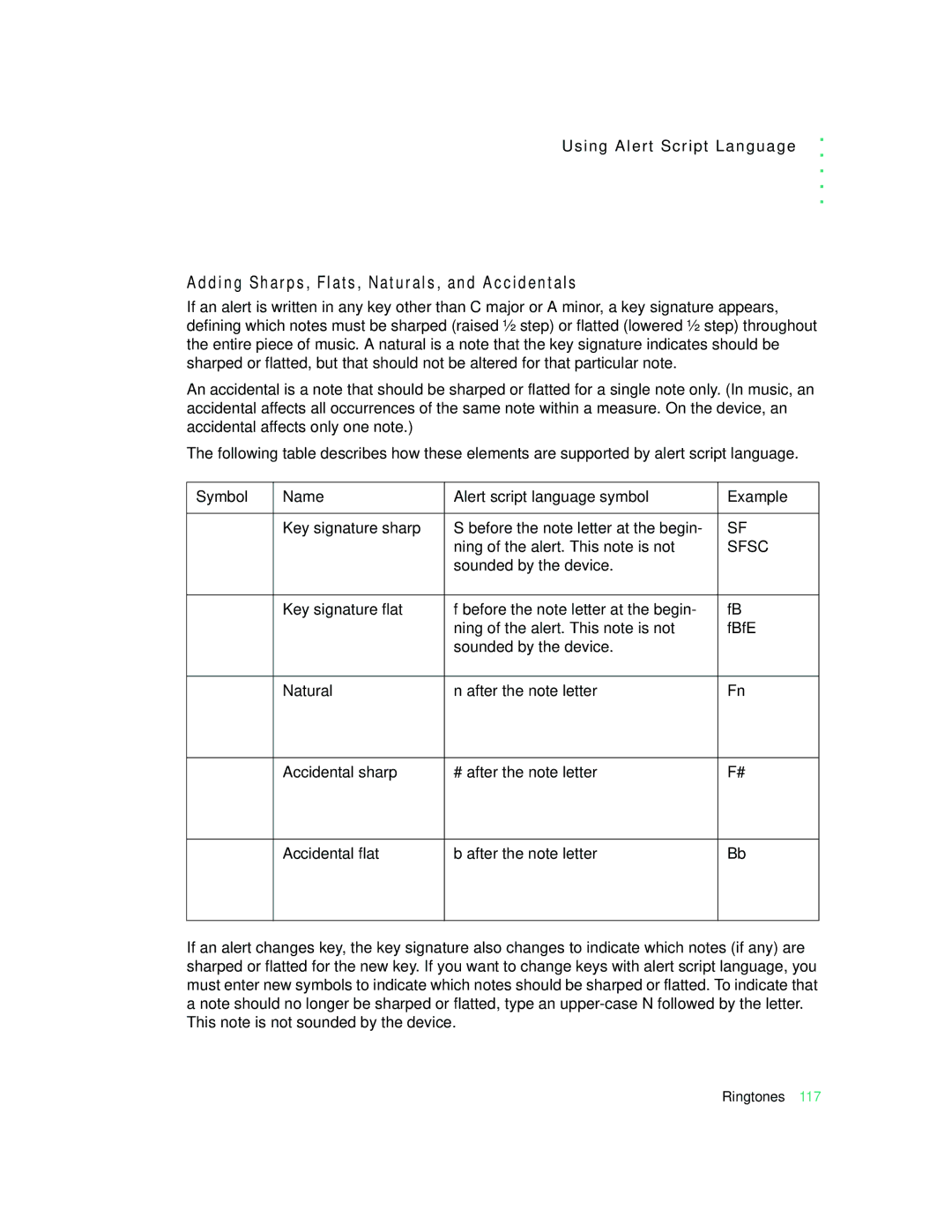Using Alert Script Language
. . . . .
Adding Sharps, Flats, Naturals, and Accidentals
If an alert is written in any key other than C major or A minor, a key signature appears, defining which notes must be sharped (raised ½ step) or flatted (lowered ½ step) throughout the entire piece of music. A natural is a note that the key signature indicates should be sharped or flatted, but that should not be altered for that particular note.
An accidental is a note that should be sharped or flatted for a single note only. (In music, an accidental affects all occurrences of the same note within a measure. On the device, an accidental affects only one note.)
The following table describes how these elements are supported by alert script language.
Symbol | Name | Alert script language symbol | Example |
|
|
|
|
| Key signature sharp | S before the note letter at the begin- | SF |
|
| ning of the alert. This note is not | SFSC |
|
| sounded by the device. |
|
|
|
|
|
| Key signature flat | f before the note letter at the begin- | fB |
|
| ning of the alert. This note is not | fBfE |
|
| sounded by the device. |
|
|
|
|
|
| Natural | n after the note letter | Fn |
|
|
|
|
| Accidental sharp | # after the note letter | F# |
|
|
|
|
| Accidental flat | b after the note letter | Bb |
|
|
|
|
If an alert changes key, the key signature also changes to indicate which notes (if any) are sharped or flatted for the new key. If you want to change keys with alert script language, you must enter new symbols to indicate which notes should be sharped or flatted. To indicate that a note should no longer be sharped or flatted, type an
Ringtones 117
